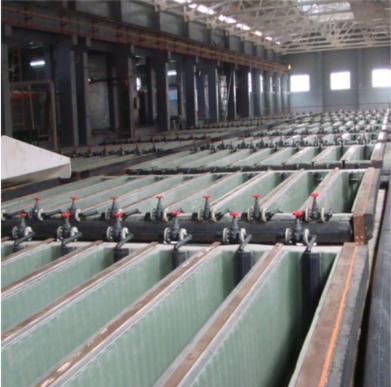Aluminum is one of the world's major nonferrous metals and is widely used in construction, transportation, aerospace and other industries. Aluminum is a mineral widely distributed in the earth's crust. It has excellent chemical properties. The alumina formed at room temperature is very stable and is often used to manufacture refractory materials, medical equipment, chemical reactors, etc., and due to its excellent conductivity, it is widely used in the power industry, such as generators, transformers, capacitors, etc. From the production process of electrolysis in an electrolytic cell, its manufacturing cost mainly includes the following aspects:
(1) Raw materials: alumina, cryolite, aluminum fluoride, additives (calcium fluoride, magnesium fluoride), anode materials;
(2) Energy costs: electricity (direct current and alternating current), fuel oil;
(3) Human costs: wages and other management expenses
(4) Other expenses: such as equipment loss and depreciation, financial expenses, freight, taxes, etc.

The research work on the simulation of the electrothermal field of aluminum electrolytic cells includes two aspects: one is to develop from one dimension to three dimensions, and calculate the steady-state and transient electrothermal fields of the local or overall aluminum electrolytic cells; the other is to test and simulate the boundary conditions and physical parameters required for electromagnetic-temperature field simulation. Although the simulation of electrothermal force fields has made great progress, there are still many shortcomings.
In the aluminum electrolytic cell, an electrolyte with cryolite, additives and alumina as raw materials is involved. The carbon material acts as the anode and the cathode. Under the action of direct current, the cathode on the carbon block is reduced to aluminum. Under the action of direct current, the aluminum electrolytic cell converts electrical energy into Joule heat according to Joule's law, and generates a thermal field under the joint regulation of thermal balance by multiple factors. At the same time, there are also multiple physical fields such as magnetic field, flow field and stress field in the electrolysis process.
The interaction between these physical fields is very complex. According to the size of their correlation, they can be divided into two categories: electric-thermal-stress field and electric-magnetic-flow field. Through reasonable distribution of electrothermal magnetic field, a better electrothermal balance can be obtained, a stable and regular tank cavity can be obtained, and the fluctuation of aluminum liquid can be reduced, thereby improving the current efficiency of the electrolytic cell and extending the service life of the electrolytic cell. Therefore, it is necessary to conduct a comprehensive and in-depth study of the electrothermal field in the aluminum electrolysis process. Numerical simulation is currently the main method for studying the electrothermal field of aluminum electrolytic cells.